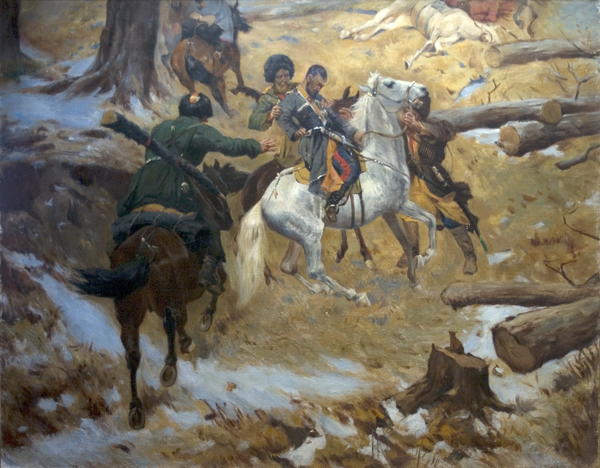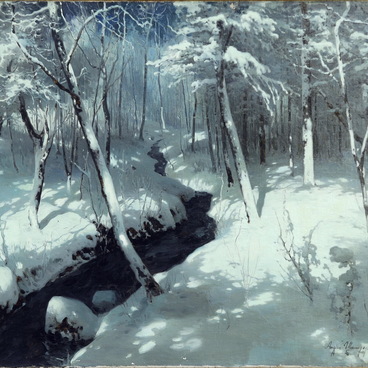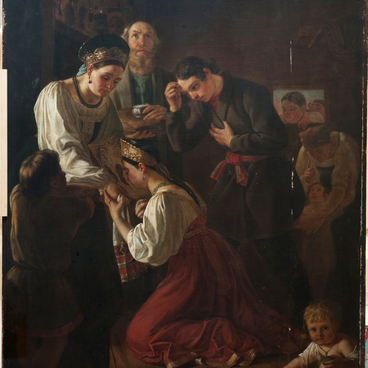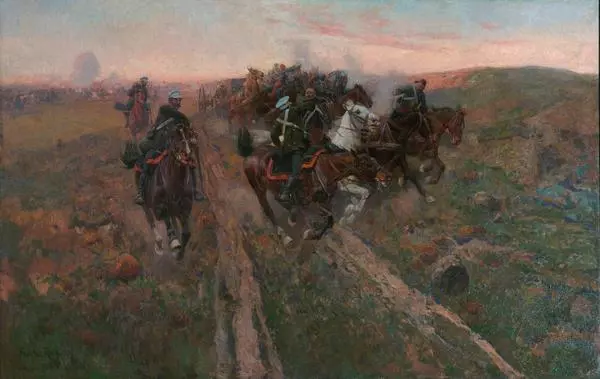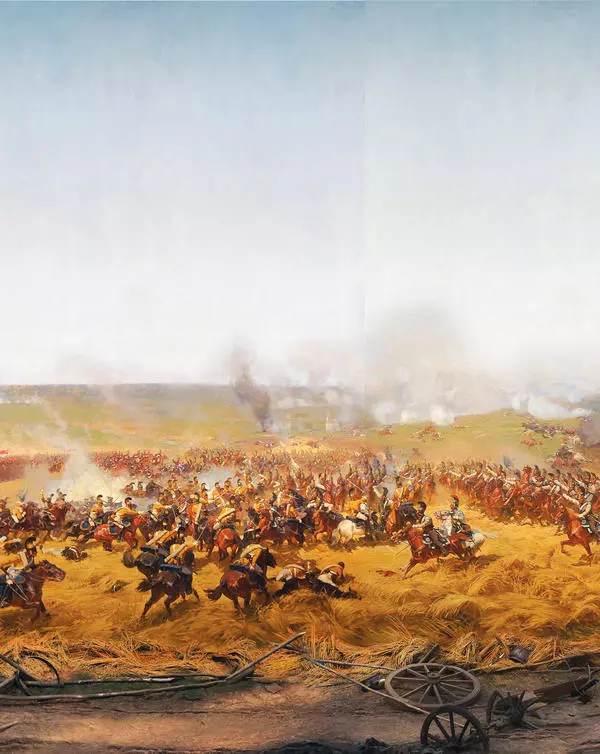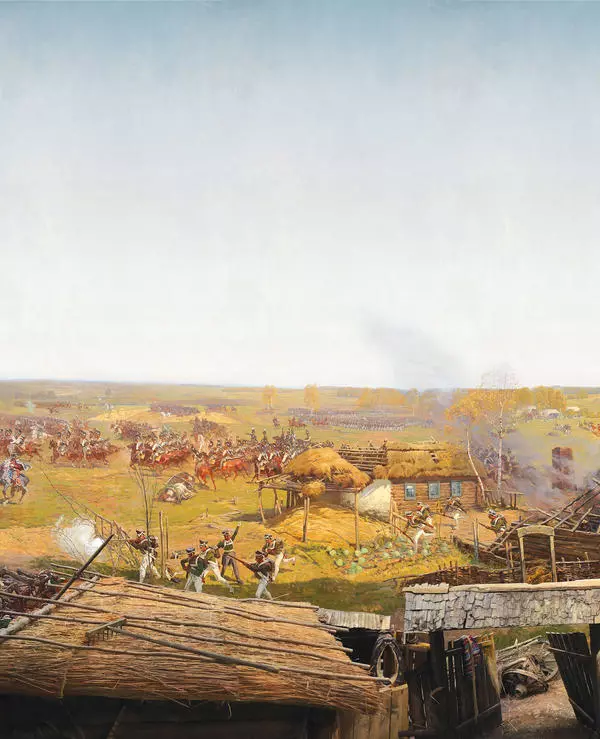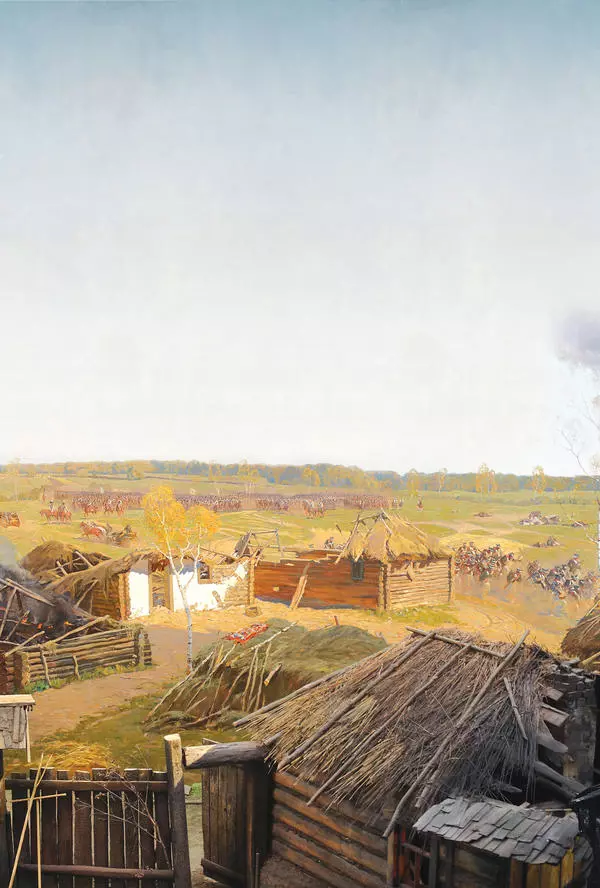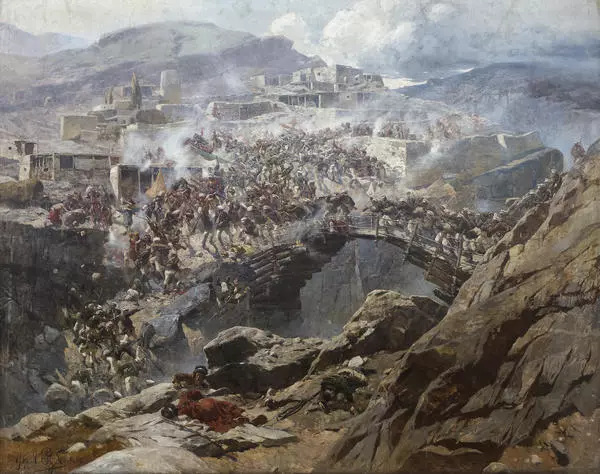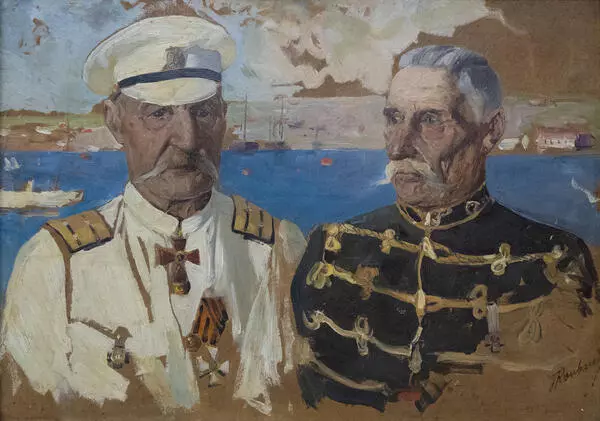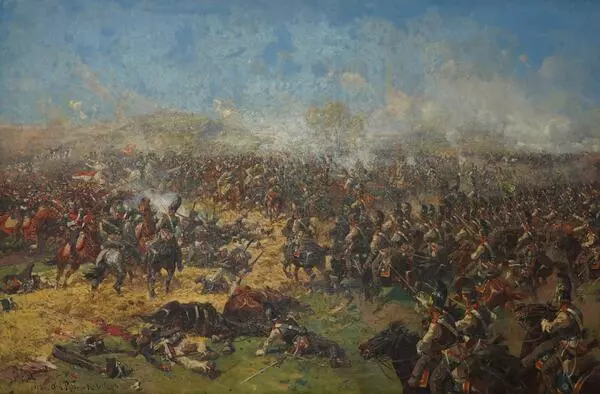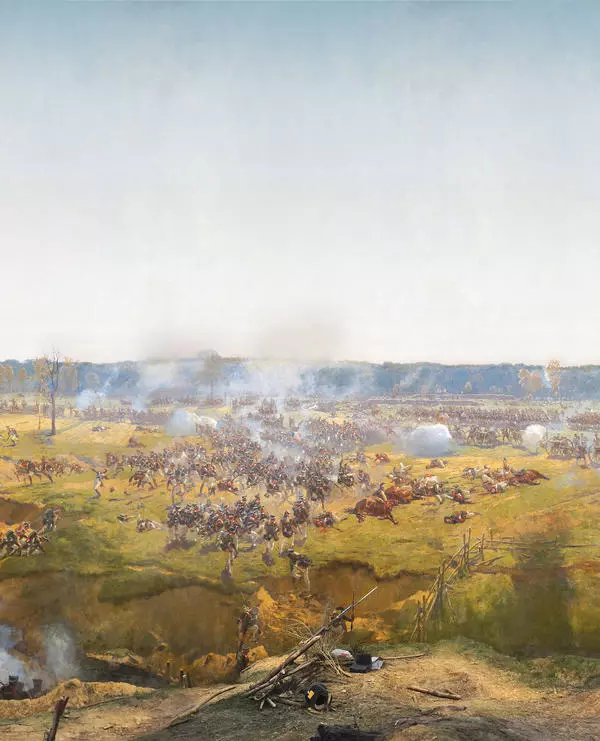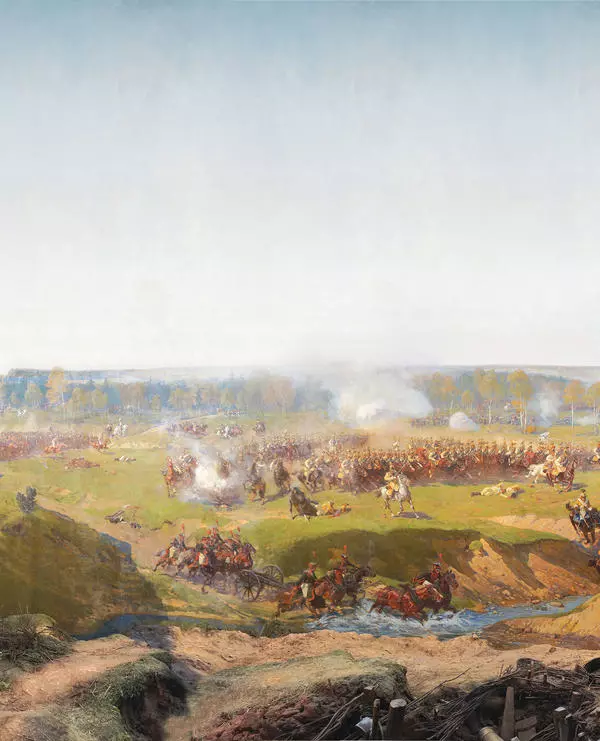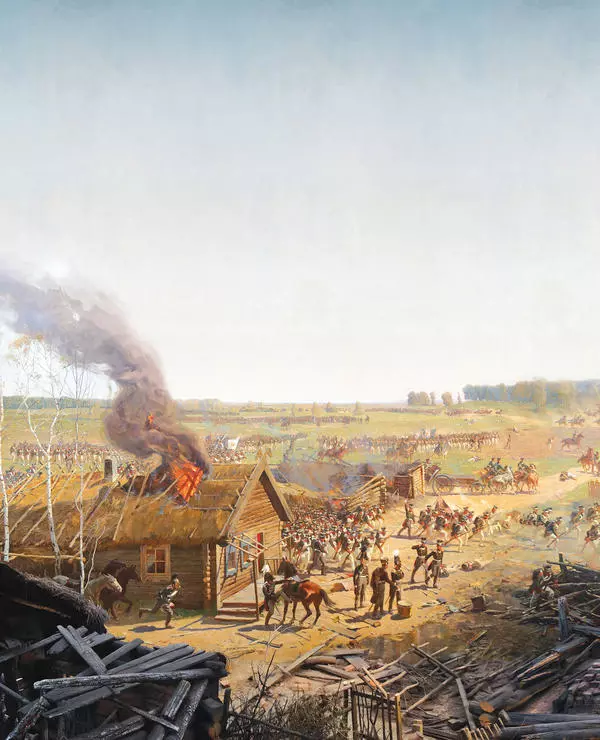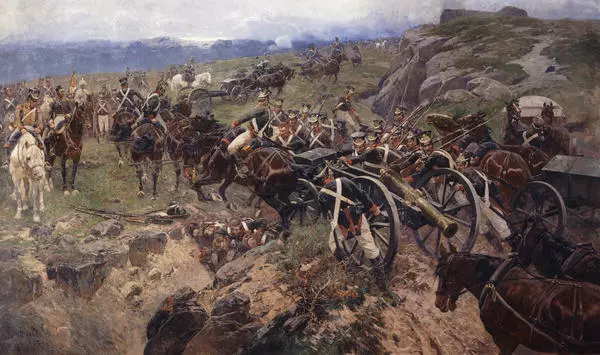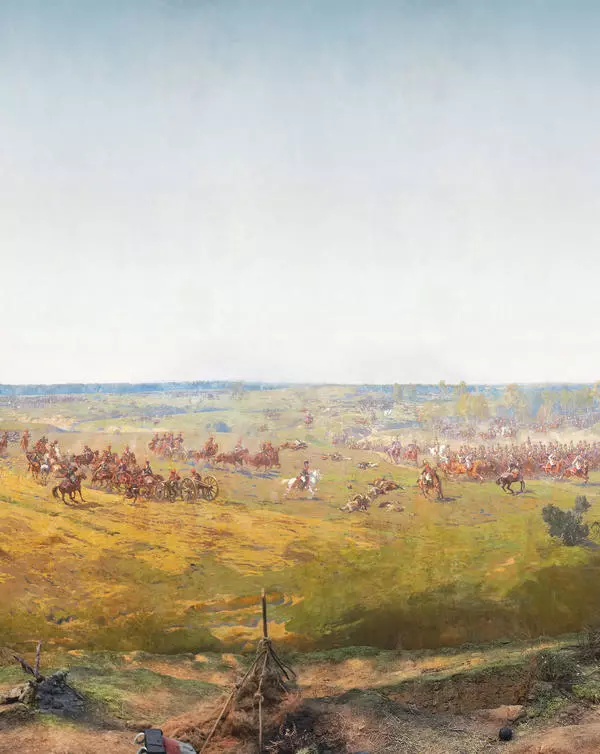Franz Roubaud was a Russian artist, who created panoramic paintings. He was an academician and the head of the battle painting workshop of the Academy of Arts in 1903, founder of the Russian school of panoramic painting. He painted 200 monumental paintings, including the cycle about the Caucasus war campaign, and created three large-scale battle panoramas. One of them – The Storm of Achulgo, was exhibited in Munich and Paris. The panorama was badly damaged during the flood of 1924; currently its fragments are kept in Dagestan.
Between 1885 and 1893, Roubaud was commissioned to paint 17 canvases for the new building of the Caucasian Military History Museum Temple of Glory, under construction in Tiflis [Tbilisi] at that time; the museum was dedicated to the history of the War in the Caucasus. The paintings were to express the official point of view on the events of the hostilities. The artist made a sketch for each work, which was to be considered and approved by a special commission. Among others, Roubaud painted the Death of Major-General Sleptsov.
Before the events of 1917, the entire series of the paintings by Roubaud was exhibited in the Tiflis Museum. The paintings were very popular and repeatedly reproduced in various publications. The Temple of Glory was closed in the 1920s, and the collections were dispersed and settled in the vaults of various North Caucasus museums, many paintings found their place in the Rostov region, in the Krasnodar and Stavropol Krais.
Roubaud 's Death of Major-General Sleptsov was taken into the Rostov Museum of Mountaineers, and after its dissolution in 1936, it ended up in Stavropol. The canvas was rarely exhibited, but today the painting by Roubaud, which depicts the historical event with a documentary accuracy, can be considered not only a piece of art, but also a historical document.
A talented muralist, capable of summing up and communicating the global scale of the historical event in his Death of Major-General Sleptsov, Roubaud also showed himself as a master of a psychological storyline. He depicted the tragic death of Nikolay Sleptsov, the hero of the Caucasus war campaign, commander of the 1st Sunzhenskiy linear Cossack regiment, who was a legend even during his lifetime.
He was killed by a shot delivered to his chest in a battle against mountaineers on the banks of the Gegha River. Upon Sleptsov’s death, Emperor Nicholas I signed a decree to give the name Sleptsovskaya to the village of Sunzhenskaya, now the Ingush town of Sunzha. The monument to the general has not survived to this day.
Between 1885 and 1893, Roubaud was commissioned to paint 17 canvases for the new building of the Caucasian Military History Museum Temple of Glory, under construction in Tiflis [Tbilisi] at that time; the museum was dedicated to the history of the War in the Caucasus. The paintings were to express the official point of view on the events of the hostilities. The artist made a sketch for each work, which was to be considered and approved by a special commission. Among others, Roubaud painted the Death of Major-General Sleptsov.
Before the events of 1917, the entire series of the paintings by Roubaud was exhibited in the Tiflis Museum. The paintings were very popular and repeatedly reproduced in various publications. The Temple of Glory was closed in the 1920s, and the collections were dispersed and settled in the vaults of various North Caucasus museums, many paintings found their place in the Rostov region, in the Krasnodar and Stavropol Krais.
Roubaud 's Death of Major-General Sleptsov was taken into the Rostov Museum of Mountaineers, and after its dissolution in 1936, it ended up in Stavropol. The canvas was rarely exhibited, but today the painting by Roubaud, which depicts the historical event with a documentary accuracy, can be considered not only a piece of art, but also a historical document.
A talented muralist, capable of summing up and communicating the global scale of the historical event in his Death of Major-General Sleptsov, Roubaud also showed himself as a master of a psychological storyline. He depicted the tragic death of Nikolay Sleptsov, the hero of the Caucasus war campaign, commander of the 1st Sunzhenskiy linear Cossack regiment, who was a legend even during his lifetime.
He was killed by a shot delivered to his chest in a battle against mountaineers on the banks of the Gegha River. Upon Sleptsov’s death, Emperor Nicholas I signed a decree to give the name Sleptsovskaya to the village of Sunzhenskaya, now the Ingush town of Sunzha. The monument to the general has not survived to this day.

